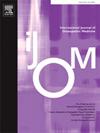接受整骨疗法治疗的个体的就业特征:一项回顾性横断面观察研究
IF 1.5
4区 医学
Q2 MEDICINE, GENERAL & INTERNAL
引用次数: 0
摘要
目的对比利时骨科患者的临床表现进行了研究和报道。缺乏关于这些人就业方面的资料。其目的是为填补这一空白作出贡献。方法采用回顾性横断面观察设计。研究人群包括比利时一家大型健康保险基金的雇佣荷兰语成员,年龄在18-65岁之间,他们在2019年1月1日至2019年12月31日期间至少看过一次整骨医生。数据收集通过数字自我报告仪器进行,填写一次。参与这项研究完全是自愿的。进行了描述性、组间和多变量逻辑回归分析。结果研究人群共955人,其中女性占70%。31%的人在12个月内因向整骨医生投诉而缺勤(平均:37.5±62.5天)。缺勤的主要原因包括非特异性腰痛(21.9%)。与首次咨询其他医疗保健专业人员的受访者相比,首次咨询整骨医生的受访者缺勤天数明显减少(27.9±52.2天对41.5±66.1天,p <;. 01)。结论:本研究首次探讨了寻求整骨疗法的个体的就业相关特征。研究结果必须谨慎地解释,但它们给人的第一印象是骨科护理对就业的影响。这种影响需要应用研究设计来进一步检验,从而得出关于整骨疗法治疗与就业结果之间因果关系或非因果关系的结论。本文章由计算机程序翻译,如有差异,请以英文原文为准。
Employment characteristics of individuals who received osteopathic care: a retrospective cross-sectional observational study
Objective
The profile and clinical presentation of people consulting osteopaths in Belgium has been studied and reported before. Information on employment aspects of such individuals is lacking. The aim was to contribute to filling this gap.
Methods
The study had a retrospective cross-sectional observational design. The study population included employed Dutch-speaking members, aged 18–65, of a large Health Insurance Fund in Belgium who had visited an osteopath at least once in the period January 1, 2019 and December 31, 2019. Data collection occurred through a digital self-reported instrument to be filled out once. Participation in the study was entirely voluntary. Descriptive, between-group and a multivariate logistic regression analyses were performed.
Results
The study population included 955 individuals with 70 % being female. Thirty-one per cent reported work absence (mean: 37.5 ± 62.5 days) in a 12 months’ time period due to the complaint for which they consulted an osteopath. The main reason for work absence included non-specific low back pain (21.9 %). Respondents indicating the osteopath as the first care professional they consulted had significantly fewer work absence days compared to those who first consulted another health care professional (27.9 ± 52.2 vs. 41.5 ± 66.1 days, p < .01).
Conclusion
This is the first study examining employment-related characteristics of individuals seeking osteopathic care. The findings must be cautiously interpreted, but they give a first impression of what the effect of osteopathic care on employment may be. This impact needs to be further examined applying study designs that allow conclusions about the causal or non-causal relationship between osteopathic care and employment outcomes.
求助全文
通过发布文献求助,成功后即可免费获取论文全文。
去求助
来源期刊
CiteScore
2.20
自引率
36.80%
发文量
42
审稿时长
3 months
期刊介绍:
The International Journal of Osteopathic Medicine is a peer-reviewed journal that provides for the publication of high quality research articles and review papers that are as broad as the many disciplines that influence and underpin the principles and practice of osteopathic medicine. Particular emphasis is given to basic science research, clinical epidemiology and health social science in relation to osteopathy and neuromusculoskeletal medicine.
The Editorial Board encourages submission of articles based on both quantitative and qualitative research designs. The Editorial Board also aims to provide a forum for discourse and debate on any aspect of osteopathy and neuromusculoskeletal medicine with the aim of critically evaluating existing practices in regard to the diagnosis, treatment and management of patients with neuromusculoskeletal disorders and somatic dysfunction. All manuscripts submitted to the IJOM are subject to a blinded review process. The categories currently available for publication include reports of original research, review papers, commentaries and articles related to clinical practice, including case reports. Further details can be found in the IJOM Instructions for Authors. Manuscripts are accepted for publication with the understanding that no substantial part has been, or will be published elsewhere.

 求助内容:
求助内容: 应助结果提醒方式:
应助结果提醒方式:


